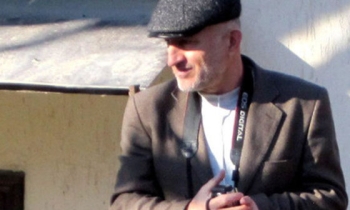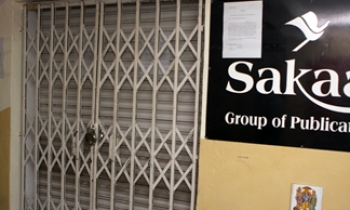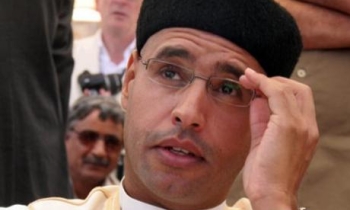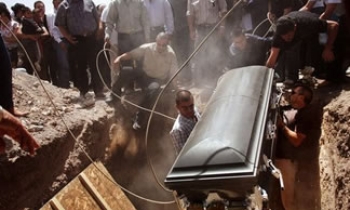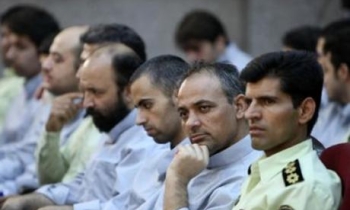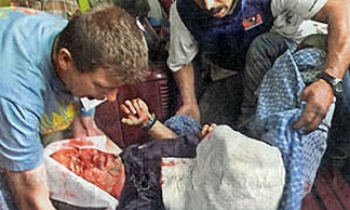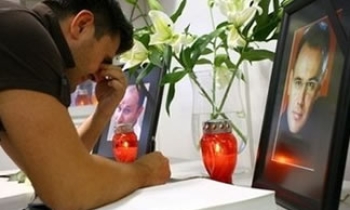The worldwide journalist death toll has risen sharply this year with 100 lives lost within six months, threatening even the record level reached in 2006.
According to the International News Safety Institute (INSI), 83 journalists and 17 other media professionals have died covering news stories between January 1 and June 26, compared with 68 at the same time last year. INSI recorded a total of 168 casualties in 2006, the worst year ever.

The 100 mark was reached in Iraq — the worst killing ground for the news media in modern times — with the assassination on Tuesday of Hamed Sarha, 57, shot by unidentified gunmen on his way home. Iraq's press syndicate president Shehab al-Tamimi said Sarhan had been a journalist for 30 years in newspapers, magazines and for the Iraqi news agency. He leaves a widow and five children.
"This is a shocking development. We have never known such a high death toll half way through a year, and we fear for what might be to come" said INSI Director Rodney Pinder.
"It is even more terrible that the 100th victim should be a veteran Iraqi. Sarhan and his family by rights should be enjoying the fruits of real press freedom today for the first time in all his years on the job, most of them under dictatorship. Instead, he is gone and his family, like so many in Iraq, is in mourning. Democracy has even less chance of taking hold in Iraq while journalists are being slaughtered like this."
INSI now counts 214 news media dead in Iraq since the invasion in March, 2003. The great majority are Iraqis, murdered by unidentified assailants in the swirling civil war.
According to INSI's records 72 of the casualties worldwide over the past six months were evidently murdered.

They include prominent cases such as Hrant Dink, the high-profile editor of Agas newspaper in Turkey, shot three times outside his office in Istanbul, Edward Chikomba, whose badly beaten body was found in roadside bushes in Zimbabwe and Ajmal Naqshbandi and Sayed Agha, kidnapped in Afghanistan by the Taliban along with Italian reporter Daniele Mastrogiacomo, who was released unharmed.
But most of the dead were little known outside their own countries where they were targeted for trying to do their daily jobs.
The biggest increases over the same period in 2006 were in Africa, up from 3 to 18, and Iraq, from 28 to 42.
Eleven of the Africans died in accidents — six of them in a single bus crash on a military facility — but four were assassinated, in Somalia, Ghana, Zimbabwe and DR Congo, and three died in crossfire covering the conflict in Somalia. There were three murders and no war casualties last year.
Iraq continued up its unique spiral of horror. Twenty-two Iraqi journalists and support staff were murdered and 14 died in other conflict-related incidents.
After Iraq, the countries where most journalists were murdered in the first half of this year were Afghanistan (5), Haiti and Philippines, each with four dead, Somalia, Palestine and India (3) and Sri Lanka, Mexico and Brazil (2).

As a news safety organisation, INSI records all manner of deaths -- from murder to accident -- of all members of the news gathering and production business, whether staff or freelance, provided they appear to have died as a result of their work. Details of incidents can be found at http://www.newssafety.com/casualties/2007.htm
INSI recently completed a global inquiry into journalist deaths worldwide which tracked 1,000 news media deaths over the past decade. The inquiry report and recommendations can be seen on http://www.newssafety.com/stories/insi/globalinquiry.htm
Other journalist support groups who are members of INSI maintain their own records based on their own criteria. They are:
International Federation of Journalists http://www.ifj.org
Committee to Protect Journalists http://www.cpj.org
International Press Institute http://www.freemedia.at/cms/ipi
World Association of Newspapers http://www.wan-press.org


